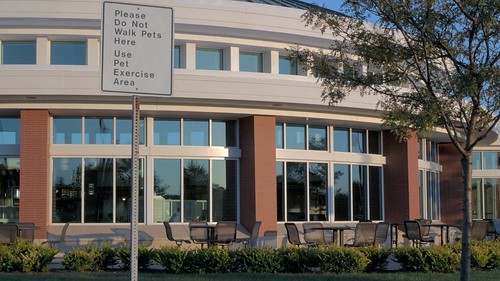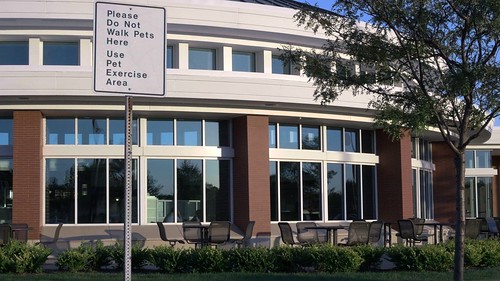
It allows to keep PV going, with more focus towards AI, but keeping be one of the few truly independent places.
-
@Misfire 100% agreed.
-
@shian that blue light concept reminded me of the Arri D-20 launch where they stated the sensor was a native 5600 kelvin and therefore would look better when lit to daylight (and no 85 filter). Worth investigating.
-
Filmconvert should have a new vlog profile around 7th October
-
wondering if anyone has or is willing to test the 10 bit out to see if it still has the magenta cyan macroblocking issues? I'm assuming it doesn't, but I'd like to know. I'd do it myself but I don't have an external recorder.
-
Here's an example of 8-bit internal and 10-bit external. These are small 1:1 extractions of a 4K frame. I'll let you be the judge of where on "the disappointment scale" they land.

 8bit.jpg475 x 251 - 58K
8bit.jpg475 x 251 - 58K
 10bit.jpg475 x 251 - 56K
10bit.jpg475 x 251 - 56K -
@zakforsman I'm not really seeing anything on the 10 bit so not disappointed? Any chance I can see the original clips?
-
You may be wrong - the 8 bit is an indication of channel precision. An 8 bit YUV image, as an 8bit RGB, pixel is 32bit long (16.8M colors). Or else we would have 256 colors footages... kind of old computer games graphics.
Another thing; if GH4 V-Log is using only 30-190 values (out of 0-255), that means 160 possible values which is a ~7.35bit precision (~2^7.35 instead of 2^8).
Also note that H264 is in YUV color space, a color space that's more efficient than RGB but, on the other hand, it's already mapped just between 16-235.
The problem with V-Log is it also suffers from this problem in 10 bit precision, where human eye would have a VERY hard time detecting color nuances... (and, for that mater, we must include all other GH4 original profiles in this problem...)
-
The plot thickens... I took some footage in an event yesterday in v-log and I found two things: 1. The color are great in the high lights red spot lights are red and blue are blue, not white. 2. Very little macro blocking, because lack of green lights maybe...
Hypotesis for testing will the greengel technique @shian suggested help or would just recording in an offsetted WB do the trick. Should one offset green down or up? Testing this WB trick later.
This one was shot in iso 800 and tungsten wb. Interesting...

 No macroblocking.jpg1920 x 1080 - 378K
No macroblocking.jpg1920 x 1080 - 378K -
You use a minus-green gel or Magenta filter > White balance on gray card > save WB to custom WB slot.
Do this for both tungsten and sunlight. Select one or the other depending on lighting conditions.
I also do one in half CTB light as well
-
@shian are you saying that you tried that and it works, or just a hypothesis?
-
I used it on the hacked GH2 to eliminate blocking in the blue and red channels. Going to filmtools today to get a new gel and try it.
-
That causes camera to compensate recording more green, right? Then you take it down in post? As long as we don't saturate green channel...
Maybe camera has assimetric color sensibility...
That makes be remember the 1st Dolby analog noise deduction systems here treble was enhanced during recording and attenuated with the same curve during playback, thus reduction high frequency tape hiss with it.
-
I tried about 30 luts to see which minimized the red/magenta smearing and found the Free Zucato Gratical ones found here: http://deluts.businesscatalyst.com/deluts-free-lut.html do a pretty good job...just FYI
-
@tedbrah I read your explanation on bits, and I kinda get what you're saying, but the 5 bit argument just doesn't add up (pun intended!) because that means there are only 32 values from pitch black to full white, and we know that's not the case. Of the 160 discrete values that are captured, that is per color.
I do agree that mapping V-Log across the entire 8 bit range and to hell with Varicam LUT compatibility would have let the GH4 shine, but maybe a bit too bright for Panasonic's executives taste.
-
starting to enjoy playing with the vlog footage with random luts. It seems the main key is to overexpose by a stop and you should be ok. Anything underexposed gets noisey but in good daylight you can get a good clean image. looking forward to speciifc luts/profiles for the vlog from filmconvert/impulz soon rather than trying to manipulate luts that were created for other models
-
Bitrate seems to be a far more significant factor in macroblock artifacts. Look at the stressed structure of the image by adding 5 or 10 times the normal maximum saturation you would use. You may need to stack filters or nodes. You get a wild mosaic of large brightly multicolored blocks on the 100Mbs image. Go to the standard Prores format of over 500Mbs and there is a dramatic reduction. Raise that to HQ at over 800Mbs and the further improvement is quite pronounced but that may still not be the limit of what the GH4 is capable of. I exported a lut of the highly exagerated saturation and ran in through my external recorder and also passed through to a 24" 4k monitor. The image right out of the HDMI had none of the large colorful blocks, still a click or 2 improved over the 800Mbs image.
-
@jopereira @estarkey Sorry, you are correct, 160 values would be about 7.322-bits not 5. Still, 2/3 of a bit is a lot of data and by squeezing an image into a smaller color space there will be problems. "I do agree that mapping V-Log across the entire 8 bit range and to hell with Varicam LUT compatibility would have let the GH4 shine, but maybe a bit too bright for Panasonic's executives taste." -Very much agreed.
-
Here's one more point of comparison. estarkey7 sent me these. Both images were processed in ACES, with color balancing, exposure compensation, and a straight Rec.709 rendering. The GH4's Standard and Natural photo styles are manipulating the colors in ways that I can't fully undo. Maybe I can with a Cinelike photo style.
-
Grabbed some footage, spontaneously, no OIS or tripod. Looked nice with the LUT applied which surprised me compared to my sunset tests ( @shian is right, anything with a gradient, shows banding). Edited into something viewable. Panasonic GH4 (Varicam) LUT, turned on then off in each shot for comparison. Best viewed in HD on Vimeo (click on the Vimeo button in the player window).
-
I don't wanna speak too soon, but the Magenta filter is showing some serious promise. I didn't get to insert it and try it till just now, and so just shot a roll of paper towels with a swirly pattern, single tungsten light, custom white balance on gray card, and shot at an angle so the light falloff would create a gradient. Exposed by handheld meter at 0.
ZERO BANDING
ZERO MACRO BLOCKING
I mean none... at all.... anywhere. There's very fine colored noise, but no blocking or banding anywhere. If you look closely, what appears like banding in the shadows is actually the swirl pattern of the towels.
UHD24, NR-5, Sharpness -2, [reduced scale to 1080 for file size.
I'll throw it at some sky gradients, white walls, gray walls, bright lights, sidewalks, etc tomorrow.

 Vlog.jpg1919 x 1081 - 524K
Vlog.jpg1919 x 1081 - 524K
 light grade.jpg1918 x 1080 - 846K
light grade.jpg1918 x 1080 - 846K
 high contrast saturation cranked..jpg1916 x 1080 - 659K
high contrast saturation cranked..jpg1916 x 1080 - 659K
 Davinci Scopes.jpg1788 x 1043 - 2M
Davinci Scopes.jpg1788 x 1043 - 2M -
Sounds promising Shian, which minus green / magenta filter are you testing?
Edit..I might have a flourescent correction filter somewhere :)
-
@shian Looking good. Thanks.
-
@shian I have been getting nasty banding/blockiness on creamy yellows and mid to dark brown colours. Mostly on low saturation colours like on painted walls. I have not had many issues with neutral whites or greys. Try some soft pastel colours and see what happens.
-
@shian if you could throw some skin into tomorrows testing it would be greatly appreciated!
Howdy, Stranger!
It looks like you're new here. If you want to get involved, click one of these buttons!
Categories
- Topics List23,970
- Blog5,724
- General and News1,346
- Hacks and Patches1,153
- ↳ Top Settings33
- ↳ Beginners255
- ↳ Archives402
- ↳ Hacks News and Development56
- Cameras2,360
- ↳ Panasonic990
- ↳ Canon118
- ↳ Sony155
- ↳ Nikon96
- ↳ Pentax and Samsung70
- ↳ Olympus and Fujifilm100
- ↳ Compacts and Camcorders300
- ↳ Smartphones for video97
- ↳ Pro Video Cameras191
- ↳ BlackMagic and other raw cameras117
- Skill1,961
- ↳ Business and distribution66
- ↳ Preparation, scripts and legal38
- ↳ Art149
- ↳ Import, Convert, Exporting291
- ↳ Editors191
- ↳ Effects and stunts115
- ↳ Color grading197
- ↳ Sound and Music280
- ↳ Lighting96
- ↳ Software and storage tips267
- Gear5,414
- ↳ Filters, Adapters, Matte boxes344
- ↳ Lenses1,579
- ↳ Follow focus and gears93
- ↳ Sound498
- ↳ Lighting gear314
- ↳ Camera movement230
- ↳ Gimbals and copters302
- ↳ Rigs and related stuff272
- ↳ Power solutions83
- ↳ Monitors and viewfinders339
- ↳ Tripods and fluid heads139
- ↳ Storage286
- ↳ Computers and studio gear560
- ↳ VR and 3D248
- Showcase1,859
- Marketplace2,834
- Offtopic1,319










